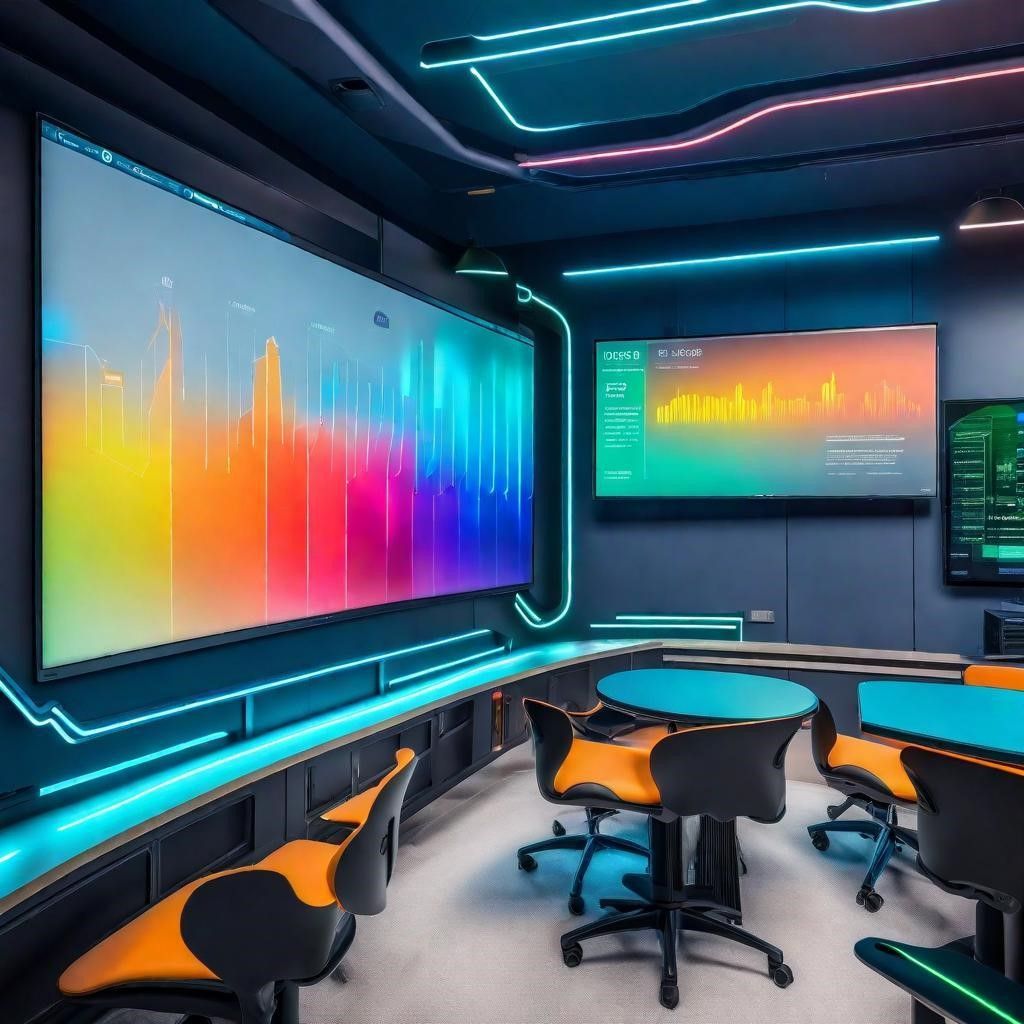Revolutionizing Classrooms: An In-depth Exploration of Affordable Smart Boards Technology for School
Introduction
A. Understanding Smart Boards Technology
1. Definition of Smart Boards Technology
Smart Boards Technology refers to interactive whiteboards that are used in educational institutions to boost the quality of teaching. It integrates traditional chalkboard features with modern capabilities, such as touchscreen controls as well as digital content sharing and the integration of mobile and computer devices. Have you ever thought about the fact that using the smart boards is comparable to the way you use your mobile but on an even larger dimension?
2. Brief History and Evolution of Smart Boards Technology
The origins in Smart Boards Technology go back to the latter part of the 1980s. When computers became more widespread as well, there was a requirement for more advanced tools for learning, and then the very first whiteboard that was interactive created. In the past the whiteboards have adapted dramatically in terms of user-friendlyness, and also incorporating features such as video conference, real-time feedback as well as multi-user collaborative. It's as if they simply took a chalkboard and sprinkled it with some magic, and then transformed it into an engaging teaching tool!
3. The Importance of Smart Boards Technology in Modern Education
Smart Boards Technology is reshaping classrooms through the transformation of inactive learning into an engaging experience. It blends audio, visual and kinesthetic styles of learning that meet the various requirements of students. It also supports the use of distance learning, gives instant feedback and increases students' engagement. When the room is a stage and the smart boards acts as the stage.
B. The Current State of Smart Boards Technology in Schools
1. Rates of adoption for Smart Boards Technology in Schools
Despite its benefits, Smart Boards Technology adoption isn't universal. Surprisingly, some regions have a rate as low as percent. The rates are higher in private and urban schools, which reveals a troubling lack of access to this revolutionary technology.
2. Factors Hindering the Adoption of Smart Boards Technology
Incorporating Smart Boards into classrooms isn't as simple as connecting a device and hitting the"power" button. The high cost as well as poor technical support, a lack of infrastructure such as inadequate internet bandwidth, a lack of a management console to monitor and control the Smart Boards, and inadequate training for teachers.
3. The Disparity in Smart Boards Access Across Schools
Although some institutions are using technologically advanced teaching tools, other schools remain reliant on traditional chalkboards. This digital divide reflects social inequities, denying certain students of the necessary technology-based exposure.

The Financial Implications of Smart Boards Technology
A. It is the Cost Factors Associated with Smart Boards Technology
1. Initial Purchase
The primary cost element can be seen in the cost of initial purchase. With models that range from $1000 to $5,000, they do not come at a bargain price. However, because there are several series available, users need to be clear about their goals, requirements, and functionalities.
2. Installation, Setup, and Maintenance
The problem is that this can be difficult. Installation of hardware (Smart Boards can be heavy piece of hardware), software, set-ups and regular maintenance may increase the cost, just as having your car maintained.
3. Training and Support
Training for teachers and technical assistance is essential to ensure a successful implementation, but they can add up to the total cost. But it is essential to invest in this because purchasing a smartboard without understanding how to use this is like buying the Ferrari without being able to drive.
B. The Economic Case for Smart Boards Technology in Schools
1. Efficiency and Productivity Gains
Despite the huge expenditure, smart boards provide unquestionable improvements in productivity and efficiency. Teachers can organize their lessons better while students can interact with the content at a deeper level.
2. Long-term Cost Saving
While the initial expense could be substantial, the long-term cost savings are achievable by reducing paper use and other materials for classrooms.
3. Digital literacy is a skill that will be a necessity for the future of work
In the age of digitalization technological advancement, being proficient on the technology side isn't a benefit, it's an absolute requirement. Smart boards help students develop digital skills that are essential in the workplace of today.

Affordable Smart Boards Solutions for Schools
A. Lower-Cost Smart Boards: An Emerging Market Trend
1. Key Players Providing Low-cost Smart Boards Technology
While premium brands dominate the market New players provide cost-effective alternatives, such as IMAGO, SmartTech, and Promethean to name just a handful.
2. Key Features and Case Studies Reviews
Smart boards that are less expensive offer essential features such as touch controls, digital markers and screen share options. Case Studies from users highlight their easy-to-use layout, dependable support and affordable prices.
3. Comparison of Traditional Smart Boards with Traditional Smart Boards
While they may lack some features found in the most expensive options, the budget friendly choices are a good value to schools with less of a budget.
B. Strategies to Fund Smart Boards in Schools
1. Grant Opportunities and Funding Programs
Grants from federal government agencies, foundations and corporations provide the opportunity to fund technological advancements in schools.
2. Partnerships and Sponsorships
Making alliances with tech companies or getting the sponsorship of local business could help offset expenses.
3. Crowd-funding and Parent-Teacher Association Initiatives
Crowdfunding as well as PTA fundraising events can assist in raising the needed money needed for the implementation of smart boards.

Implementing and Maximizing Affordable Smart Boards Technology
A. Teaching Teachers to Be Successful Using Smart Boards Technology
1. Essential Smart Boards Skills for Teachers
Skills such as navigating program, using the digital markers tools in addition to the ability to save and retrieve work, and integrating other tools are essential for teachers.
2. Professional Development Courses and Resources
Online courses, webinars and instruction manuals are great educational opportunities for teachers. Be aware that even the most advanced technology is ineffective without the knowledge to make use of it.
3. In-house Training and Peer Mentoring
Implementing a train-the trainer method which a skilled teacher instructs the rest of the staff, is an economical solution.
B. Student Engagement and Learning Styles
1. Interactive Learning Using Smart Boards Technology
Engage students through incorporating animated tours, virtual tours, and live-streamed polls in lessons. By tapping or a swipe, students are able to participate and actively learn.
2. Responding to various learning styles by using Smart Boards
If a student is a visual or an auditory or tactile student Smart boards accommodate different learning styles. The technology's versatility is similar to an Swiss Army Knife for teaching.
3. Facilitating Student Collaboration through Smart Boards Technology
Multi-touch technology allows students can work in real-time to build teamwork and develop thinking skills.

The Future of Affordable Smart Boards Technology in Schools
A. The Evolution and Future Trends of Smart Boards Technology
1. Current Research on Smart Boards Technology
The ongoing research is focused on improving the user interface with interactive features and the incorporation of augmented and virtual reality components.
2. Anticipated Advancements in Smart Boards Technology
From the holographic display to the advanced AI integration the possibilities are endless. Future smart boards technology is exciting and as exciting as the morning sun.
3. Potential New Use Cases in the Classroom
It could be AI-powered virtual science experiments, tutoring for students, or inter-school collaboration, the latest applications expand the possibilities of education in the classroom.
B. Broadening Access to Smart Boards Technology
1. Global Outreach Programs for Smart Boards Distribution
The efforts of tech companies and NGOs to provide smart boards to developing countries are leading the global revolution in education.
2. Progressive Policies for Technology Access in Schools
Policies of the government can ensure equal the access of Smart Boards Technology, bridging the gap between technology and education.
3. Promoting diversity and inclusion through Smart Boards Technology
Smart boards are an effective tool for inclusiveness accommodating students with special needs and creating an inclusive learning environment.

Summary and Conclusion
A. Recap of Affordable Smart Boards Technology
Smart boards that are affordable disrupt the education industry by providing interactive digital learning even at schools with a low budget. In the beginning, overcoming cost barriers leads to higher student engagement along with teacher efficiency and savings.
B. Final Thoughts on the Future of Smart Boards Technology in Schools
As technology continues to advance and become more sophisticated, so will smart boards. The problem isn't in keeping up with these advances and innovations, but rather in making sure their use is broader that they can transcend socioeconomic boundaries. Let's envision a world in which every classroom regardless of location or source of funding is benefited by this revolutionary technology.

Frequently Asked Questions
A. Answering the most frequently asked questions regarding Smart Boards Technology
What exactly is a smartboard?
An interactive whiteboard or a smart board interactive whiteboard is an educational device that combines the functions of a normal whiteboard and the power of computers.
Does a smart boards requires special markers?
No. Actually, one of the advantages of smart boards is that they do not require chalk or markers. They operate using a stylus, or your fingers!
Are smart boards difficult to make use of?
Like all technology that is used, there's an initial learning curve for smart boards, but once you've become accustomed to it, you'll be amazed at how easy and easy to use it.
B. Addressing other issues and concerns affordable Smart Boards Technology
What if I'm unable to have the money to buy a smartboard?
There are many possibilities from partnerships to grants to crowd-funding to enable smart boards to be less expensive. And there are plenty of affordable basic model of Smart Boards out there.
Are cheap smart boards do any great?
While they may lack bragging rights or a few features, smart boards that are priced low generally provide value and will meet fundamental needs of the classroom.
Newsletter
Comments

